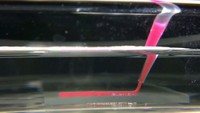Advertisement
Grab your lab coat. Let's get started
Welcome!
Welcome!
Create an account below to get 6 C&EN articles per month, receive newsletters and more - all free.
It seems this is your first time logging in online. Please enter the following information to continue.
As an ACS member you automatically get access to this site. All we need is few more details to create your reading experience.
Not you? Sign in with a different account.
Not you? Sign in with a different account.
ERROR 1
ERROR 1
ERROR 2
ERROR 2
ERROR 2
ERROR 2
ERROR 2
Password and Confirm password must match.
If you have an ACS member number, please enter it here so we can link this account to your membership. (optional)
ERROR 2
ACS values your privacy. By submitting your information, you are gaining access to C&EN and subscribing to our weekly newsletter. We use the information you provide to make your reading experience better, and we will never sell your data to third party members.
Adhesives
Snail mucus inspires new superglue
Hydrogel conforms to rough surfaces and forms strong adhesive bond upon drying
by Celia Arnaud
June 22, 2019
| A version of this story appeared in
Volume 97, Issue 25
With adhesives, it’s hard to have it all. They’re usually either strong or reversible. And getting both reversible and strong adhesion can be even more difficult if the target surface is rough or uneven. A team led by Shu Yang of the University of Pennsylvania and Anand Jagota of Lehigh University has cracked the problem, developing an adhesive that can conform to irregular surfaces while being both strong and reversible (Proc. Natl. Acad. Sci. U.S.A. 2019, DOI: 10.1073/pnas.1818534116). The researchers were inspired by the mucus structure that snails use to hang on to rough surfaces such as rocks or trees, called the epiphragm. The new material is made of a poly(2-hydroxyethyl methacrylate) hydrogel cross-linked with ethylene glycol dimethacrylate. In its soft, hydrated state, the material conforms to target surfaces. As the hydrogel dries, it locks onto the surface with an adhesive strength of as much as 892 newtons per square centimeter, which is strong enough to be considered a superglue. When rehydrated, the adhesive releases and returns to its original shape. The researchers used the snail-inspired adhesive to move delicate objects such as butterfly-wing scales. Yang says the group is now working on adhesives that don’t require water to release. “With the understanding of the mechanism of adhesion and reversibility, our next step is to find a new material that can be activated by heat, light, or electrical field,” she says.





Join the conversation
Contact the reporter
Submit a Letter to the Editor for publication
Engage with us on Twitter